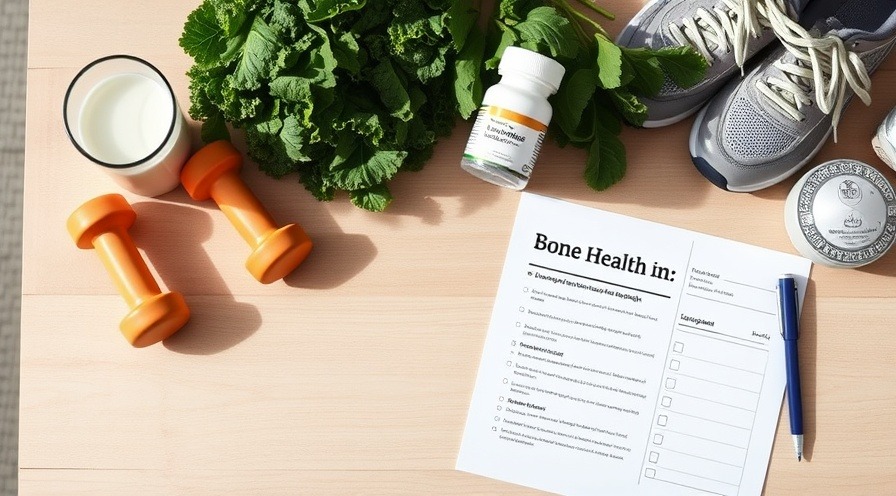
Understanding Bone Density: Why It Matters
Have you ever wondered how your bone health is holding up? With rising concerns about osteoporosis and fractures as we age, understanding bone density is crucial. After all, the density of our bones can indicate our risk for serious injuries, such as fractures in the wrist, hip, spine, and shoulder. So, let’s explore the various methods to measure bone density, their advantages, and drawbacks, helping you make informed decisions about your health.
In 'What’s the Best Way to Measure Bone Density?', the conversation sheds light on various measuring techniques, prompting us to delve deeper into these methods and their implications for your health.
Common Methods to Measure Bone Density
Many approaches exist for assessing bone density, ranging from simple scales to complex imaging techniques. Unfortunately, not all of them provide accurate results.
1. Bioelectrical Impedance Scales: These popular scales claim to measure bone density through an electrical signal that travels through the body. While they can indicate muscle mass and body fat, they are generally deemed unreliable for assessing bone density.
2. Ultrasound: Utilizing sound frequencies, ultrasound can estimate bone density, but it's not particularly reliable and is often used for soft tissue imaging. Although it’s radiation-free, its accuracy in measuring bone density falls short.
3. Plain X-rays: X-rays are useful when 30-50% of bone density loss has occurred, but they do not reliably measure density for the average individual, particularly when soft tissue obscures the bone.
4. Blood and Urine Markers: Tests assessing bone activity can provide insights into the effectiveness of treatments for osteoporosis, rather than an accurate measurement of bone density.
Gold Standard: DEXA Scans
The gold standard for measuring bone density is the DEXA (Dual-Energy X-ray Absorptiometry) scan. This method provides a reliable assessment of bone health with low radiation exposure, about one-tenth to one-hundredth of a standard X-ray. Furthermore, it can compare your bone density to a reference group, allowing for a clear understanding of your status—be it normal, osteopenia, or osteoporosis.
It's essential to note, though, that DEXA scans do not assess bone quality or accurately reflect the fracture risk for everyone, as they largely depend on a population of younger females for their benchmarks.
When and How to Get Tested
Timing is everything when it comes to bone density testing. Adults, especially women over 65 and individuals with risk factors for osteoporosis, should consider regular screenings. It’s also wise to get follow-ups at the same facility to ensure consistent results, as variations in machines can yield different readings.
Take Charge of Your Bone Health
Understanding how to measure your bone density is essential for maintaining a healthy lifestyle. Regular screenings, along with a balanced diet rich in calcium and vitamin D, can significantly enhance your bone health and reduce the risk of fractures.
Next time you think about your health choices, remember that being proactive about bone density could protect you from serious injuries in the future. You have the power to shape your health journey!
If you found this information helpful, consider sharing it with friends and family who may benefit from understanding their bone health better.
 Add Row
Add Row  Add
Add 




Write A Comment